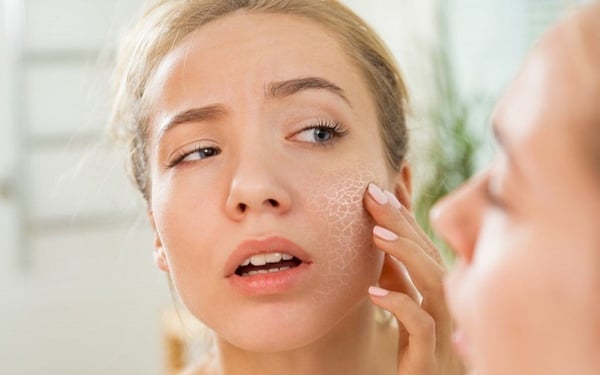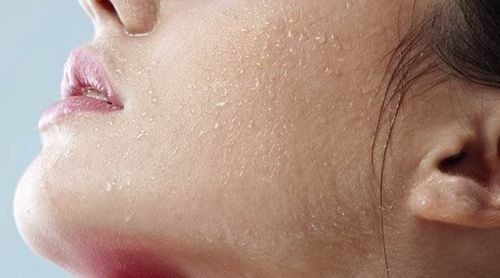Why Dry Skin is Still Prone to Acne
It is a common misconception that only oily skin is acne-prone due to overactive sebaceous glands. However, dry skin can also suffer from acne and may even be more challenging to treat effectively.
One of the most prevalent causes is dehydration. When the skin lacks water, the lipid layer, responsible for retaining moisture and protecting the skin from bacteria, weakens. This leads to dry skin becoming flaky, sensitive, and prone to inflammation. As a compensatory mechanism, the body stimulates the oil glands to produce more sebum. This excess oil, combined with dirt and bacteria, clogs pores, creating an ideal environment for acne to form.

Additionally, hormonal fluctuations play a significant role. Hormonal imbalances can lead to overactive sebaceous glands, resulting in clogged pores and the development of inflammatory acne.
This condition is often observed during puberty, pregnancy, perimenopause, or when taking certain medications that influence hormone levels. Aside from hormonal factors, the excessive use of cosmetics can also contribute to acne in dry skin. Using multiple products simultaneously can disrupt the skin’s natural balance, leading to irritation, increased oil production, and persistent acne breakouts.
Another factor is the lack of regular exfoliation. The buildup of thick layers of dead skin cells, combined with excess oil and dirt, will clog pores and result in acne vulgaris.
Using rich, heavy night creams during the day can also be problematic. These creams may cause the skin to feel suffocated, attracting dirt and leading to acne breakouts.

Similarly, inadequate makeup removal is a common culprit. Without proper cleansing, the accumulation of dirt, bacteria, and cosmetic residue can lead to skin inflammation and acne. Lastly, prolonged stress triggers the release of cortisol, which stimulates sebaceous gland activity. This results in an oily appearance and persistent acne in dry skin.
Common Mistakes in Caring for Dry Acne-Prone Skin
The condition of dry, acne-prone skin can be exacerbated by subjective factors, such as the common habit of squeezing pimples. This not only damages the skin’s surface and disrupts its natural protective barrier but also introduces bacteria, increasing the likelihood of scarring and pigment changes.
Another mistake is the improper use of acne treatment products. Dry skin requires a unique care regimen, and using overly potent acne treatments or applying them out of sequence can lead to irritation, flaking, and even mild burns.
Additionally, choosing skincare products with a high pH can have serious consequences. Strong cleansing agents strip away the skin’s natural oils, leaving it taut and vulnerable to acne-causing agents.
Furthermore, applying acne treatments before moisturizing is a common mistake with dry skin. This can increase the risk of irritation and further dryness. Instead, it is advisable to apply a light layer of moisturizer first to hydrate and protect the skin before using any treatment products. This approach not only reduces discomfort but also lowers the risk of allergic reactions.






























